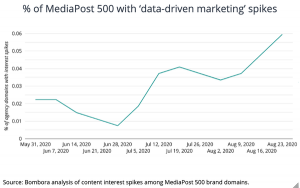— January 16, 2018
Perhaps your brand blows all your competitors out of the water. Or maybe there are a handful of businesses that have much better blog posts or videos than you do – or so you think. Comparisons with your competitors are not the place to rely on hunches, feelings or the results of a couple of their killer marketing campaigns you’ve casually reviewed.

shell_ghostcage / Pixabay
To truly know how you stack up against your competitors, you need to know the facts. Those facts can come out of a competitive analysis.
Competitive Analysis Benefits
Regularly conducting a competitive analysis can arm you with important information that helps your brand thrive. It can help you:
- Spot gaps in the market
- Fill those gaps with new products and services
- Discover market trends
- Increase the effectiveness of your marketing and sales efforts
Now that you know the value of conducting a competitive analysis, it’s time to get busy with the specifics.
Identify Direct Competitors
Identifying your direct competition is the first step, since that’s where you’ll want to focus. Direct competitors are companies that provide similar offerings across the same geographic areas that could substitute for your products or services. A good example would be a desktop computer company and another desktop computer company.
Indirect competitors are those that provide products that aren’t the same as yours but could fill the same customer need. An example here would be a desktop computer company and a company that sells laptops.
Examine Your Competitor’s Content
Head to your competitor’s website and make a list of the types of content produce and where it resides on the site. While you may find the bulk of the content through the top navigation menu, don’t forget to poke around other areas of the site to ensure you have all the content covered. Content types may include:
- Blog posts and feature articles
- E-books
- White papers
- Videos and visual content
- Podcasts and webinars
- PowerPoint and slide presentations
- Web pages, including the about page and FAQs
- Press releases and news
- Research articles, case studies and guides
Review content types, quality, topics and publishing frequency. Determine what types of content seem to get the most attention, how in-depth they go on various topics, and what topics they tend to cover.
Look at Their SEO Focus
Looking at the SEO structure in your competitor’s content can give you additional insights as to why they may be excelling where you’re not. Here you want to review the use of keywords in elements such as:
- Content copy
- Page title and H1 tags
- URL architecture
- Internal links
- Image alt text
Review the SEO structure as well as the types of keywords being used, whether they’re keywords with high search volumes or long-tail keywords with a narrower focus.
Review Their Social Media Integration
Social media can play a major role in marketing efforts, and you want to check out how your competition is integrating it into their overall plan. Determine what platforms your competition uses, along with the frequency and type of information they post. Also look at the number of followers and quality of interactions with those followers.
Analyze and Compare
Evaluating what you find can include performing what is known as a SWOT analysis. SWOT stands for Strengths, Weaknesses, Opportunities and Threats, and making note of these four aspects can help you uncover areas where your own company could improve.
One more step in the process is to evaluate your own company using the same process you used to analyze your competition. This gives you a baseline to compare across the board.
Transform Your Findings into Action
Once you see where you stand with regard to your competitors’ content, you can decide what you want to do to match and eventually surpass them. It’s important to look at all areas of marketing, as they’re all interrelated.
Taking the time to conduct a regular competitive analysis can help ensure your company doesn’t lag far behind your competitors, or even fall off the map completely. You’ll consistently discover key areas where you excel, could improve, or can otherwise focus your resources and efforts to keep your brand ahead of the crowd.
Business & Finance Articles on Business 2 Community
(74)








